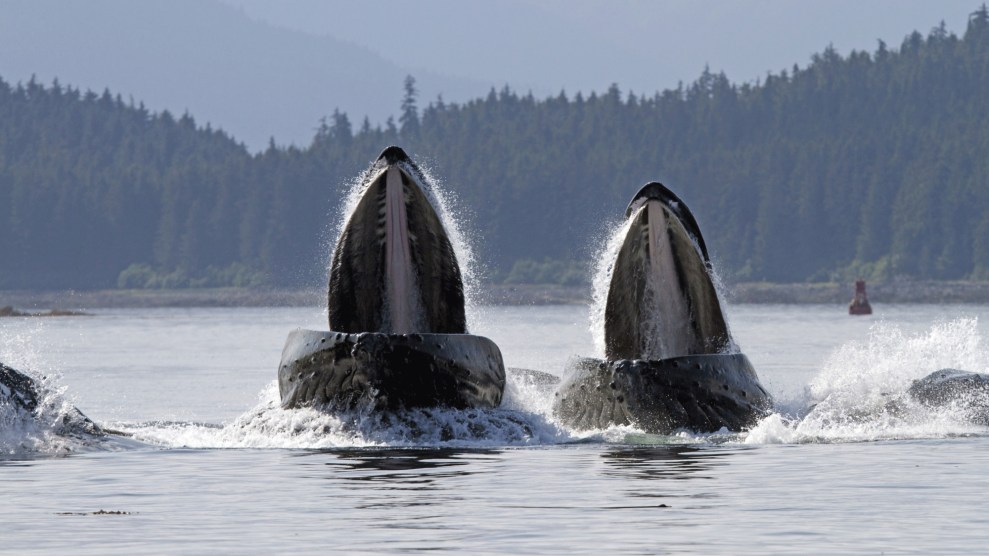
A chick stares into the cosmos. Mother Jones illustration; Getty
This just in: The scientists have solved it. After a millennium of taunting young biologists and philosophers as Plutarch pondered: “Which was first, the bird or the egg?” the great chicken and egg debate is perhaps coming to a close.
The chicken (or, rather its amniote ancestor) has beat the egg.
Obviously, eggs of some form or another existed long before chickens—they are female sex cells, which evolved somewhere between 1 billion and 2 billion years ago, before even our ancestor’s ancestor’s had adapted their way out of the water and onto dry land. The eggs that these scientists studied are the hard-shelled ones—the kinds that chickens lay—which evolved about 325 million years ago.
These kinds of eggs are called amniotic eggs because of the way they keep the gestating fetus encased in “private pond,” as Professor Michael Benton, professor at the University of Bristol and an author of the new study explains. This adaptation was vital for creatures who crawled out of the oceans, allowing them, Benton continues, to “move away from the waterside and dominate terrestrial ecosystems.”
Jurassic age loading.
Having made the link between hard-shelled eggs and life on land, scientists and reporters thought they had laid the issue to rest, so to speak: The hard-shelled egg appeared on the scene, allowing the ancestor of the chicken to adapt to a new environment, where our fowl friends would later thrive.
But, last week, a team of scientists at Nanjing University and the University of Bristol stepped in and made everything a little more complicated. The researchers examined 51 fossil species and 29 living species all from the Amniota family—which includes mammals, lizards, dinosaurs, crocodiles, birds, and yes, chickens. They found that the earliest terrestrial amniotes may not have first laid hard-shelled eggs: They either gave birth to live young or did a third, strange option, called extended embryo retention (EER).
Unlike with hard-shells, which, when laid, contain an offspring that’s only a bundle of cells, EER allows parents to keep the fetus inside the womb for longer and to give birth to live offspring at different developmental stages—as early as the beginning of limb formation. This flexible gestation comes with evolutionary benefits, says Joseph Keating, one of the study authors from Nanjing University. No hard-shelled, protective egg needed.
In other words: the researchers concluded that the earliest common ancestors of the Amniota family likely relied on extended embryo retention to procreate, throwing a wrench into the established hard-egg theory, which insisted the hard-shelled egg was necessary for the development of terrestrial animals and therefore chickens.
But, before you get too discombobulated or call up your high school biology teacher, do know it’s not a binary issue. Technically, the chicken that we know today came about after our amniote pals switched to laying hard-shelled eggs.
Regardless of if the chicken or egg came first, these researchers have peeled away another layer of understanding of how animals evolved.














